The Norman Conquest
The Introduction of Inquisitions
Until the 19th century the English jury was understood to have its origins in the Anglo-Saxon period.
"Some authors have endeavoured to trace the origin of juries up as high as the Britons themselves, the first inhabitants of our island; but certain it is that they were in use among the earliest Saxon colonies."
Commentaries on the Laws of England, William Blackstone (1723 – 1780)
This understanding was challenged from the mid 1800s when academics suggested that the jury was introduced into England through the use of inquistions following the Norman Conquest.
Under the rule of Louis the Pious (778-840), King of the Franks and Aquitaine, royal rights were ascertained by an inquisition - a jury of administrative inquiry.
Until the 19th century the English jury was understood to have its origins in the Anglo-Saxon period.
"Some authors have endeavoured to trace the origin of juries up as high as the Britons themselves, the first inhabitants of our island; but certain it is that they were in use among the earliest Saxon colonies."
Commentaries on the Laws of England, William Blackstone (1723 – 1780)
This understanding was challenged from the mid 1800s when academics suggested that the jury was introduced into England through the use of inquistions following the Norman Conquest.
Under the rule of Louis the Pious (778-840), King of the Franks and Aquitaine, royal rights were ascertained by an inquisition - a jury of administrative inquiry.
Inquistions were used as a royal means of gathering information, particularly of a financial nature, which would be useful to the King. The best and most credible people of a local district assisted the fact finding process and were made to swear an oath to tell the truth. A juror is one who swears an oath.
Juries of local representatives were used to gather information for the Domesday Book.
This new theory however was obliged to ignore or downplay the Anglo-Saxon communal duty to present crime found in the Wantage Code of King Æthelred II.
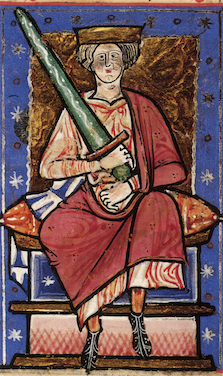
Æthelred II ‘The Unready’
From an early 13th century copy of the Abingdon Chronicle
King Æthelred II (978 - 1016)
Æthelred II issued two sets of law codes. The Woodstock, or Anglo-Saxon Dooms, and the Wantage Code which applied in the Danelaw. Both were promulgated around 997.
Æthelred II has been credited with the formation of a local investigative body made up of twelve thegns who were charged with publishing the names of any notorious or wicked men in their respective districts. The members of these bodies were under solemn oath to act in accordance with the law and their own good consciences and as such it has long been considered to be the prototype for the English grand jury.
Provision for such a body was enacted in the Wantage Code.
'... there shall be an assembly in every wapentake, and in that assembly shall go forth the twelve eldest thegns and the reeve along with them, and let them swear on holy relics, which shall be placed in their hands, that they will never knowingly accuse an innocent man nor conceal a guilty man. And thereafter let them seize those notorious men, who have business with the reeve, and let each of them give a security of 6 half-marks, half of which shall go to the lord of that district, and half to the wapentake.'
It is thought that Æthelred was re-confirming a custom which already existed and was expanding an established English custom for use among the Danish citizens in the Danelaw.
The oath used under the laws of Æthelred II was used to swear in jurors from the 10th century to modern times.
Æthelred II issued two sets of law codes. The Woodstock, or Anglo-Saxon Dooms, and the Wantage Code which applied in the Danelaw. Both were promulgated around 997.
Æthelred II has been credited with the formation of a local investigative body made up of twelve thegns who were charged with publishing the names of any notorious or wicked men in their respective districts. The members of these bodies were under solemn oath to act in accordance with the law and their own good consciences and as such it has long been considered to be the prototype for the English grand jury.
Provision for such a body was enacted in the Wantage Code.
'... there shall be an assembly in every wapentake, and in that assembly shall go forth the twelve eldest thegns and the reeve along with them, and let them swear on holy relics, which shall be placed in their hands, that they will never knowingly accuse an innocent man nor conceal a guilty man. And thereafter let them seize those notorious men, who have business with the reeve, and let each of them give a security of 6 half-marks, half of which shall go to the lord of that district, and half to the wapentake.'
It is thought that Æthelred was re-confirming a custom which already existed and was expanding an established English custom for use among the Danish citizens in the Danelaw.
The oath used under the laws of Æthelred II was used to swear in jurors from the 10th century to modern times.
Royal Courts and the Extension of Trial by Inquisition
Although the Normans left Anglo-Saxon customs and laws largely untouched certain changes were made. In 1076 William the Conqueror issued a writ separating the Lay and Ecclesiastical Courts in England. The King appointed circuit judges who traveled the realm and dispensed the King's justice. The administration of justice became more centralised.
Henry II (1154-1189) made it more attractive for people to settle their disputes in the royal courts by devising a series of standardised writs giving people clear and guaranteed access to recognised procedures in the royal courts.
By a series of enactments, called Assizes, Henry II opened trial by inquisition - or jury trial - to the general population for the resolution of civil matters, primarily issues involving land.
Although the Normans left Anglo-Saxon customs and laws largely untouched certain changes were made. In 1076 William the Conqueror issued a writ separating the Lay and Ecclesiastical Courts in England. The King appointed circuit judges who traveled the realm and dispensed the King's justice. The administration of justice became more centralised.
Henry II (1154-1189) made it more attractive for people to settle their disputes in the royal courts by devising a series of standardised writs giving people clear and guaranteed access to recognised procedures in the royal courts.
By a series of enactments, called Assizes, Henry II opened trial by inquisition - or jury trial - to the general population for the resolution of civil matters, primarily issues involving land.
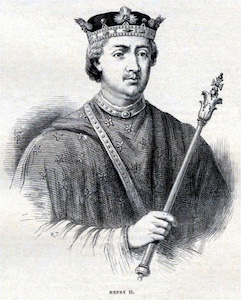
Henry II
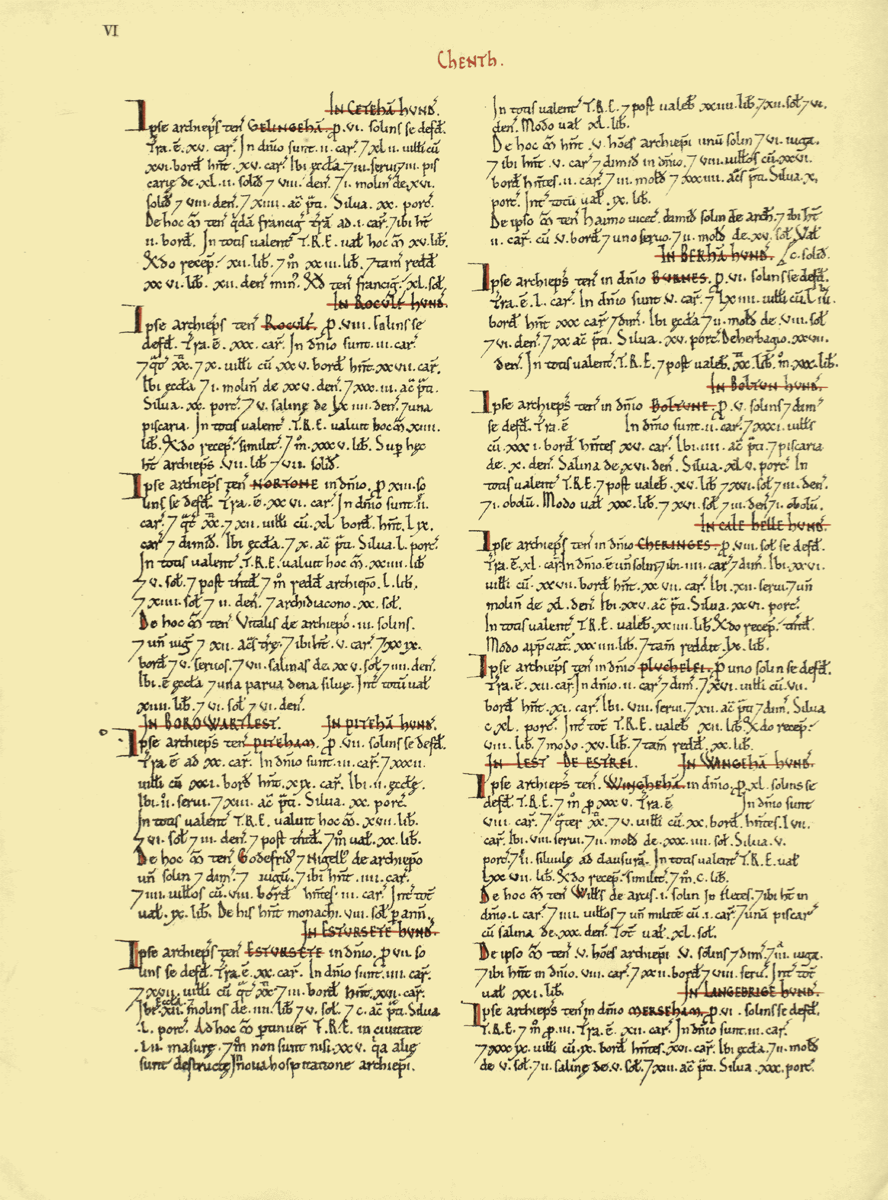
Domesday Book (1086)
The Domesday Book was commissioned by William the Conqueror to assess the extent of the land and resources owned in England and the extent of the taxes he could raise.
Royal Commissioners were sent around England to:
"...enquire by the oath of the Sheriff and of all the barons and of their Frenchmen, and of all the hundred, of the priest, or the reeve, and of six villeins of every vill, what is the name of the manor, who held it in the time of King Edward, who now, how many hides, how many ploughs, - how many men, how many villeins... how much it was worth and how much now; and all this at three times, the time of King Edward, the time when King William gave it, and now..."
Questions were put to a jury of representatives - made up of barons and villagers alike - from each county. The information collected was combined with earlier records, from both before and after the Conquest, to create the final Domesday Book.
The Domesday Book was commissioned by William the Conqueror to assess the extent of the land and resources owned in England and the extent of the taxes he could raise.
Royal Commissioners were sent around England to:
"...enquire by the oath of the Sheriff and of all the barons and of their Frenchmen, and of all the hundred, of the priest, or the reeve, and of six villeins of every vill, what is the name of the manor, who held it in the time of King Edward, who now, how many hides, how many ploughs, - how many men, how many villeins... how much it was worth and how much now; and all this at three times, the time of King Edward, the time when King William gave it, and now..."
Questions were put to a jury of representatives - made up of barons and villagers alike - from each county. The information collected was combined with earlier records, from both before and after the Conquest, to create the final Domesday Book.
Domesday Book Entry
Hundred of Canterbury [Canterbury, Northgate, Nackington and Langport]
Hundred of Stursete [St. Martin’s, Thanington, Westgate and Wic]
Hundred of Canterbury [Canterbury, Northgate, Nackington and Langport]
Hundred of Stursete [St. Martin’s, Thanington, Westgate and Wic]
Constitutions of Clarendon (1164)
The Constitutions of Clarendon defined relations between the Church and Royal authority based on the "customs, liberties and dignities of his predecessors."
They were composed of 16 articles and represented an attempt to restrict ecclesiastical privileges and curb the power of the Church courts. In particular they addressed the controversial issue of "criminous clerks", or clergy who had been accused of committing a serious secular crime but were tried in ecclesiastical courts with limited punishments.
The Constitutions of Clarendon also allowed an inquest to determine whether land was held by church authorities or whether it was lay tenure.
The Constitutions of Clarendon defined relations between the Church and Royal authority based on the "customs, liberties and dignities of his predecessors."
They were composed of 16 articles and represented an attempt to restrict ecclesiastical privileges and curb the power of the Church courts. In particular they addressed the controversial issue of "criminous clerks", or clergy who had been accused of committing a serious secular crime but were tried in ecclesiastical courts with limited punishments.
The Constitutions of Clarendon also allowed an inquest to determine whether land was held by church authorities or whether it was lay tenure.
The Assize of Clarendon (1166)
Henry II also reformed criminal law. Itinerant or travelling commissions of judges called Eyres were sent out irregularly to county courts to try those accused of serious crimes. They also inquired into administrative issues and local governance, including the conduct of local officials.
The Assize of Clarendon (1166) was a document whereby local people were drafted in to the local administration to root out criminals and bring criminal prosecutions through the Presentment Jury or Grand Jury. It drew upon and reinforced the pre-existing institution of Frankpledge.
Twelve lawful men from each hundred and four such men from each vill were to report - first to the Sheriff's Court then to the Eyre Courts - anyone accused of or suspected of being a robber, murderer or thief, later extended to include the crimes of forgery, treason and arson.
The Presentment Jury performed two functions:
- They identified persons about whom there was suspicion.
- They opined on the accuracy of the accusation. If the defendant was suspected they had to prove their case by compurgation if they were presented upon repute or ill fame alone, or trial by ordeal if there was specific information supporting the crime.
The practice developed whereby the accused was first heard by the jury of the Hundred. If this jury decided the accused was not suspected they were freed. If the accused was suspected they went before a larger jury of four men, plus the reeve, from each of the four vills nearest to the crime.
In this manner thirty two people had to suspect an individual before they went to the ordeal.
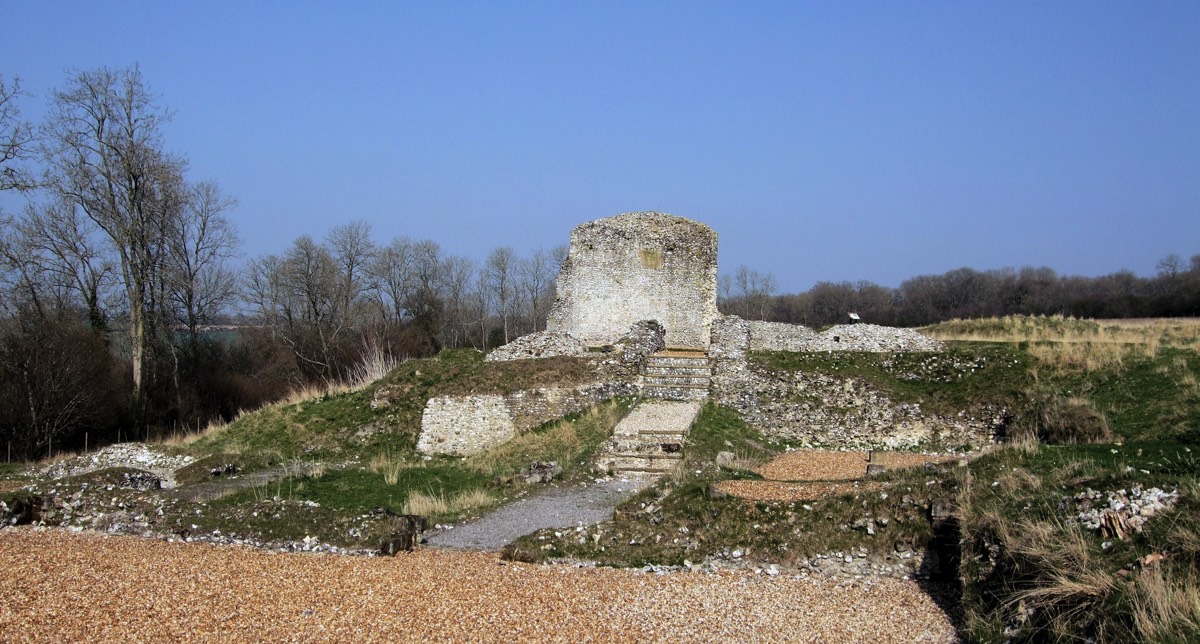
Ruins of Clarendon Palace, Wiltshire © Jim Linwood
Assize Utrum (1164) In the twelfth century land, known as free alms, was frequently donated to the church. Disputes over such land were heard by ecclesiastical courts. The writ of juris utrum challenged the authority of the church to rule on these cases and directed the sheriff to summon twelve free and lawful men to decide whether such land disputes should be heard by Church or Royal Courts.
Assize of Novel Disseisin (1166) If someone was 'disseised' or 'newly dispossessed' of their property they could buy a writ of novel dissension from the Royal Court and have the sheriff remove the people who had taken the property. The case would then be heard by twelve neighbours.
Assize of Mort D'Ancestor (1176) If a Lord blocked someone from their rightful inheritance following the death of an ancestor, they could buy a writ of mort d'ancestor instructing the sheriff to convene a jury of twelve lawful men to decide who was the nearest heir.
Grand Assize (1179) This allowed a person who otherwise would have to fight a judicial duel to determine their right to land to elect for a jury of twelve to decide their case.
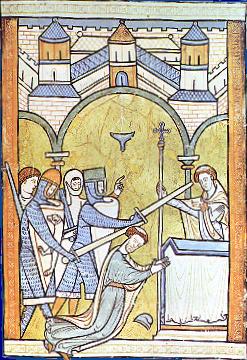
Thomas Becket
Thomas Becket (Archbishop of Canterbury, 1162–1170) resisted the Constitutions, especially the clause concerning "criminous clerks" and as a result was put up for trial at Northampton.
Becket's opposition and his subsequent conflict with Henry II ultimately led to his assassination in Canterbury Cathedral on 29 December 1170.
Thomas Becket (Archbishop of Canterbury, 1162–1170) resisted the Constitutions, especially the clause concerning "criminous clerks" and as a result was put up for trial at Northampton.
Becket's opposition and his subsequent conflict with Henry II ultimately led to his assassination in Canterbury Cathedral on 29 December 1170.
Earliest known portrayal of Thomas Becket's murder in Canterbury Cathedral
[circa 1200 ]
Author unknown
[circa 1200 ]
Author unknown